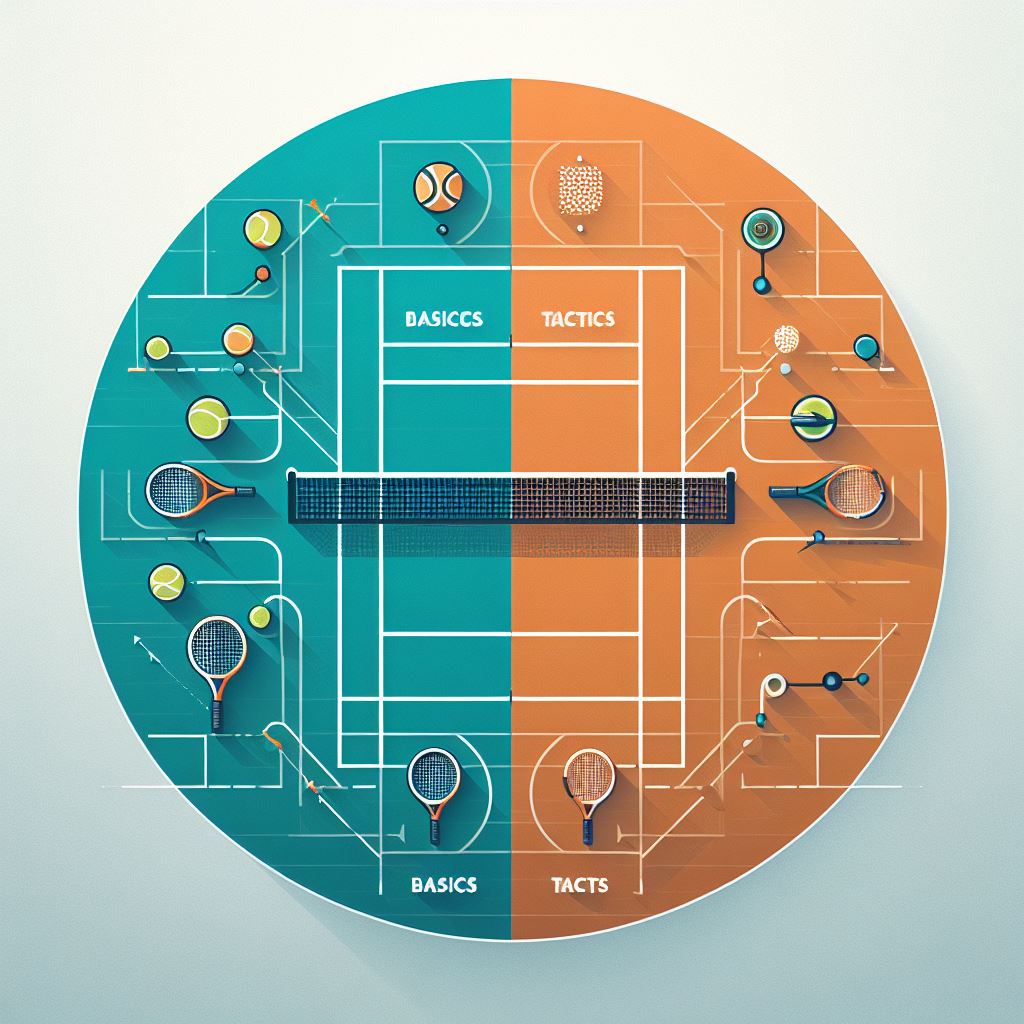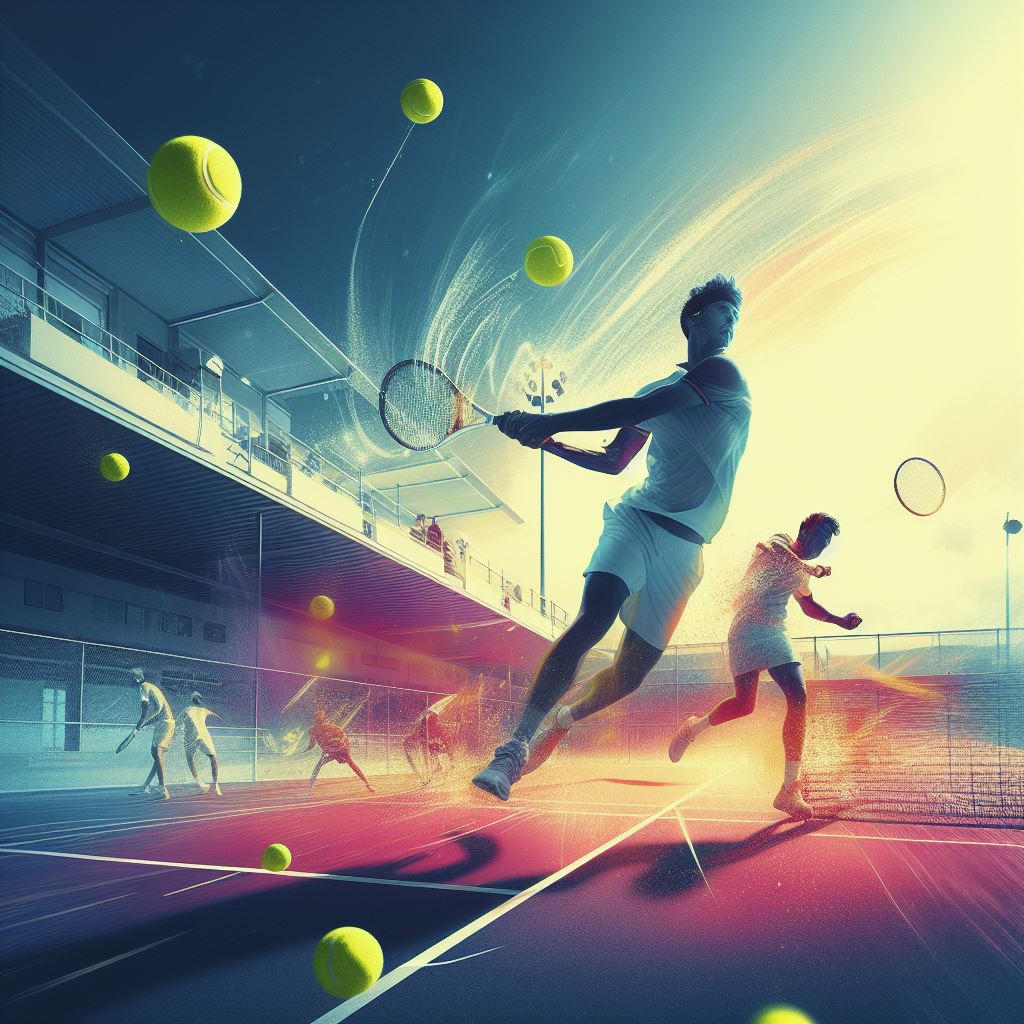Did you know that playing tennis can help seniors maintain their youthfulness and stay active? In fact, studies have shown that seniors who engage in regular physical activity, such as playing tennis, can experience improved cardiovascular health, increased muscle strength, and enhanced mental well-being.
In this article, we will explore the basics of tennis for seniors, from equipment and techniques to strategies and safety tips. Whether you’re a beginner or a seasoned player, this guide will help you stay fit, have fun, and play young on the tennis court.
Key Takeaways
- Proper footwear with adequate cushioning and support is crucial for seniors playing tennis.
- Non-slip soles in tennis shoes are essential to prevent falls.
- Improving grip strength and footwork is important for serving and returning effectively.
- Mastering forehand and backhand strokes greatly impacts the game for seniors.
Equipment for Seniors: Rackets and Shoes
When it comes to playing tennis as a senior, having the right equipment, including rackets and shoes, is essential for an enjoyable and safe experience. As we age, our bodies undergo various changes, and it becomes crucial to adapt our sporting equipment to accommodate these changes.
Proper footwear is of utmost importance for seniors engaging in tennis. As we age, our feet tend to become more sensitive and prone to injury. Therefore, it is important to invest in tennis shoes that provide adequate cushioning and support. Look for shoes that have a wider toe box to accommodate any foot deformities or bunions that may have developed over the years. Additionally, shoes with non-slip soles are essential to prevent any slips or falls on the tennis court.
Choosing the right tennis racket is also crucial for senior players. As we age, our strength and agility may decrease, requiring a racket that offers more power and control. Look for rackets that are lightweight and have a larger head size, as these features will help generate more power with less effort. Additionally, rackets with a larger sweet spot will provide more forgiveness for off-center hits, reducing the risk of injury. It is also advisable to choose a racket with a larger grip size, as this will help alleviate any discomfort or strain on the hands and wrists.
Proper Techniques for Serving and Returning
Senior tennis players can improve their game by mastering proper techniques for serving and returning, enhancing their overall performance on the court. Two important aspects to focus on when working on serving and returning are improving grip strength and perfecting footwork.
Improving grip strength is essential for a powerful and controlled serve. A strong grip allows players to generate more power and control over the ball. To improve grip strength, seniors can use hand grip strengtheners or practice squeezing a tennis ball. Regular exercises targeting the forearm muscles can also help improve grip strength.
In addition to grip strength, footwork plays a crucial role in serving and returning. Good footwork allows seniors to move quickly and efficiently around the court, enabling them to reach the ball in time and maintain balance. Seniors should practice proper footwork techniques, such as split-step and lateral movements, to improve their ability to position themselves correctly for a serve or return.
Mastering the Forehand and Backhand
To excel in tennis, seniors must strive to master the forehand and backhand strokes with precision and consistency. These two strokes are fundamental in the game and can greatly impact the outcome of a match.
One key aspect of improving these strokes is to focus on grip techniques for improved shot accuracy. Seniors should experiment with different grips, such as the Eastern grip or the Western grip, to find what works best for them.
Additionally, practicing footwork drills can greatly enhance agility and balance, which are crucial for executing powerful and accurate forehand and backhand shots. Seniors can work on drills that involve quick lateral movements and split steps to improve their footwork on the court.
Strategies for Singles and Doubles Play
To excel in tennis, seniors must not only master the forehand and backhand strokes, but also develop effective strategies for both singles and doubles play. In singles play, it is crucial to have a strong mental game, staying focused and confident throughout the match. This means staying calm under pressure, visualizing successful shots, and maintaining a positive mindset. Additionally, seniors should analyze their opponent’s weaknesses and adapt their strategies accordingly. For example, if the opponent has a weak backhand, seniors should aim to exploit that weakness by consistently attacking their opponent’s backhand side.
In doubles play, communication and teamwork are key. Seniors should establish clear signals and develop a strong understanding with their partner to effectively cover the court and anticipate each other’s moves. Communication should be constant, with seniors using verbal cues to coordinate their strategies and make split-second decisions. For instance, calling out ‘mine’ or ‘yours’ can help avoid confusion and prevent collisions on the court.
By incorporating these strategies, seniors can enhance their performance and enjoy competitive tennis.
In the next section, we will discuss the importance of staying safe and preventing injuries on the tennis court.
Staying Safe and Preventing Injuries
Ensuring safety and preventing injuries is paramount for seniors playing tennis. As we age, our bodies become more susceptible to falls and injuries. However, with proper precautions and warm-up exercises, seniors can enjoy the game of tennis while minimizing the risk of harm.
One of the key ways to prevent falls is by improving balance and stability. Before stepping onto the court, seniors should engage in warm-up exercises that focus on strengthening the core and lower body. This can include exercises such as squats, lunges, and leg swings. By incorporating these exercises into their routine, seniors can enhance their stability and reduce the likelihood of falls.
Additionally, it is important to warm up the muscles and joints before playing tennis. This can be done through gentle stretching exercises that target the major muscle groups used in tennis, such as the shoulders, arms, and legs. By increasing blood flow to these areas and improving flexibility, seniors can reduce the risk of strains and sprains.
Lastly, seniors should listen to their bodies and not push themselves beyond their limits. It is essential to take breaks when needed and to stay hydrated throughout the game. By being mindful of their physical limitations and taking necessary precautions, seniors can enjoy the benefits of playing tennis while maintaining their safety and overall well-being.
Frequently Asked Questions
How Can Seniors Improve Their Agility and Footwork on the Tennis Court?
Improving agility and footwork on the tennis court is crucial for seniors. Incorporating agility training exercises such as ladder drills and cone drills, as well as footwork drills like side shuffling and quick pivots can greatly enhance their performance.
Are There Any Specific Warm-Up Exercises That Seniors Should Do Before Playing Tennis?
Senior friendly warm up exercises are essential before playing tennis. Stretching helps increase flexibility and prevent injuries. Incorporating exercises like shoulder rolls, arm circles, and gentle jogging can prepare seniors for a successful game.
What Is the Recommended Type of Tennis Racket Grip for Seniors?
The recommended grip for seniors in tennis is a continental grip, as it provides the necessary control and versatility. Proper grip is crucial for seniors to avoid injury and maximize their performance on the court.
Are There Any Specific Dietary Recommendations for Seniors Who Play Tennis Regularly?
Dietary considerations and hydration tips are crucial for seniors who play tennis regularly. It is recommended to consume a well-balanced diet to support energy levels and muscle recovery. Staying hydrated before, during, and after matches is also essential for optimal performance.
How Can Seniors Maintain Their Flexibility to Prevent Injuries While Playing Tennis?
Seniors can maintain flexibility for injury prevention in tennis by incorporating a regular stretching routine and practicing yoga specifically designed for seniors. Additionally, proper warm-up exercises and wearing supportive footwear are essential for preventing injuries on the court.
Conclusion
In conclusion, tennis is a great sport for seniors to stay active and maintain their physical and mental well-being.
By using the right equipment, mastering the proper techniques, and implementing effective strategies, seniors can enjoy the game and minimize the risk of injuries.
Whether playing singles or doubles, tennis provides a fun and engaging way for seniors to challenge themselves and play young.
So grab a racket, put on your tennis shoes, and start enjoying the benefits of tennis at any age.








No Comment! Be the first one.